In response to a written Parliamentary question, the UK government has reaffirmed its commitment to maintaining a credible nuclear deterrent as part of its obligations to NATO.
The question, raised by Baroness Anelay of St Johns on 2nd September 2024, asked what discussions the UK government had held with NATO allies about the importance of retaining a “minimum credible deterrent” for as long as global conditions require.
The official response came from Lord Coaker, the Minister of State for the Ministry of Defence, on 16th September 2024. Lord Coaker stated:
“Since 1962, the UK has committed its nuclear deterrent to the defence of our NATO allies. The nuclear deterrent deters the most extreme threats to our national security, keeping the UK and our NATO allies safe.”
He further emphasized the ongoing significance of nuclear deterrence within NATO’s overall security framework, quoting the NATO Washington Summit declaration:
“As was made clear in the NATO Washington Summit declaration, nuclear deterrence is the cornerstone of Alliance security.”
Lord Coaker also stressed that NATO and its allies will continue to take actions to enhance deterrence and defence against all threats and challenges, across all domains. He concluded with a clear reaffirmation of the UK government’s stance:
“As the Prime Minister has set out, this Government has an unshakeable commitment to NATO and our nuclear deterrent.”



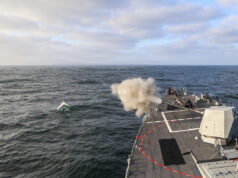
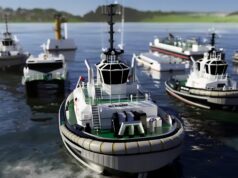
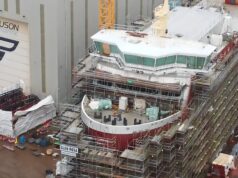
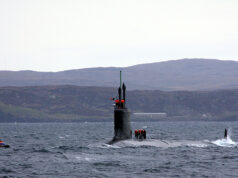
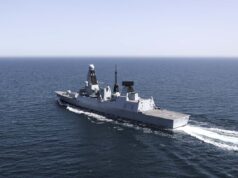

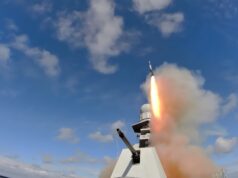
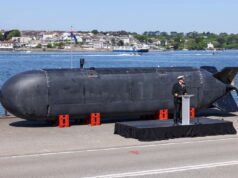
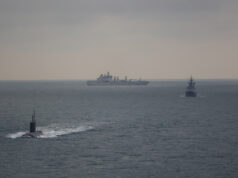


This is good news. However, I do feel that we need to re-evaluate our continuous at sea deterrent (CASD). The reason for this is based on the conclusion from the recent attacks by Iran and the Houthis, using ballistic missiles against Israel. Bearing in mind that the missiles used did not have multiple independent re-entry vehicles (MIRVs). But were a unitary warhead type, but at least 95% were shot down!
To put that in perspective, if a Vanguard unleased 8 Tridents that each carried 8 MIRVs, thereby sending 56 warheads towards a target. Only 3 would make it through a similar based air defence system, if based on the 95% interception success rate.
Admittedly very few Countries have the capability to intercept MIRVs, let alone ballistic missiles. But what one Country has others will do their damnedest to match them. Which means even though you include decoys etc with your MIRVs. The deterrent factor significantly reduces.
So perhaps it is the time to look at Plan B. We know that cruise missiles, even non stealthy ones like Tomahawk, are very difficult to detect and intercept. Storm Shadow even though it only uses a minimal of low observability design features, has proven to be very difficult to intercept by Russian air defences, including S400 and the latest Pantsir.
But with FCASW on the nearby horizon. Is it time to consider this as a Plan B option for a nuclear deterrent, that complements the CASD? FCASW is designed to be a stealthy cruise missile that replaces Storm Shadow. It will be able to carry the same if not a heavier warhead. Thereby making it capable of carrying the same nuclear warhead used by Trident’s MIRVs. If it is to be carried by the GCAP aircraft, which based on current model assumptions. Is likely to able to carry at least four FCASW. This will allow the aircraft to either get really close to an enemy’s air defences without being detected. Or allow it to bypass the defences, thereby releasing the weapons deeper in to enemy territory making them reach harder to reach targets. When backed up with aerial refuelling. It would allow GCAP to approach an enemy’s territory from an unexpected direction. Thereby increasing the chances of the weapon reaching its target.
Food for thought.
Now, I am no expert on ballistic missiles. But i was of the assumption that a Trident D5 missile and others similar are in a very different class to those fired by Iran and others. And that no defensive system in service anywhere on the planet is capable of intercepting nuclear ballistic missiles or independent warheads. I am happy to be educated by others who know more about this subject.
Correct, it’s been tried and no one has come up with a solution.
Thanks mate 👍
This was my understanding too.
Systems like SM-3, SM-6, Aster, THAAD, S-500 might all be able to have a go at intercepting in the terminal phase, but my understanding was that, as you increase the range and terminal speed of your ballistic missile, the probability of kill for an interceptor rapidly decreases.
This is why they are called a “deterrent”
They’re lobbing SR/TBM though. Much different to an ICBM. That’s bound to have an effect on interception.
Completely different scenarios and issues. Firstly the Houthi missiles are not too dissimilar to Scuds or even the V2, it’s a big old lump moving towards the target and a hell of a lot slower than a MIRV from a full on SLBM.
Put simply the longer the range, the faster and higher the missile and when it deploys its payload they are truly Hypersonic and coming down like a reentry capsule.
The missile carries a mixed load of MIRVS and decoys all of which can manoeuvre in flight hence Multiple Independent Re-entry Vehicles.
Each target is not very big so bloody difficult to hit, impossible to identify which one is real and it’s built to reenter the atmosphere so very resilient to near misses.
Which is why the number of ABM systems in the World are so few, they are incredibly expensive and only really much use for the more primitive systems such as N Korea.
Russia has a few dozen and they only provide some protection for Moscow.
The US has only 48 Interceptor missiles, which is no where near enough for a full on defensive system.
Also you need to remember that it’s extremely unlikely that ours would be the only missiles inbound to a target. But even so 12 D5s each with 3 warheads and 9 decoys is 144 targets so which ones do you pick ?
Mate, you have completely missed the point and the cintext! Previously to the ballistic missile attacks on Israel, only those on Ukraine had been defended against. Even then Ukraine’s primary defence has been Patriot. Their S300 does not have an anti-ballistic missile capability. Patriot although shown to be effective, has a limited engagement ceiling of around 50,000ft or so.
The only other publicly recorded interception is by the THAAD system, intercepting a Houthis ballistic missile aimed at the UAE.
Previously to the attack on Israel, we thought that endoatmospheric interception would still let quite a few through. Even more so with the exoatmospheric threats. Modeling and the live fire trials had shown that the systems such as SM3, SM6 and THAAD were getting better. But the Israeli Arrow was pretty much untested compared to the US systems, which have had a lot more live firings. All the live fire tests done up to the attack had been single engagements.
Come April 2024, that all changed. Iran, with the support of the Houthis, Syria and Hezbollah. Used suicide drones, cruise missiles and over 120 ballistic missiles to do a mass coordinated attack on Israel. Hoping to swarm and overpower their air defences.
The ballistic missiles used were not of the SCUD type. As these are short range ballistic missiles (SRBMs). That have a range of less than 500 miles, even with the 2 stage rocket. Instead they used medium range ballistic missiles. As these are the only ones in Iran’s inventory that have the range (1200+ miles), to reach Israel from launch sites in Iran.
The missiles they used would be from the newer Shahab-3 range. These reach a low earth orbit height and deploy a singular re-entry vehicle. Once they re-enter the Earth’s atmosphere, they will be going at a hypersonic speed. Though due to the thickening atmosphere, will likely hit the ground about Mach 4+. The attacks on Israel showed that the re-entry vehicle can maneuver. They estimated the warhead to be about 700kg HE. There is talk that Iran has had a lot of design help from North Korea in improving both the missile and the re-entry vehicle.
The Houthis also used Iranian supplied missiles. In particular the Ghadr-110. This again is a 2 stage medium range missile (1500 miles) but carries a 1000kg HE warhead. Again in a singular re-entry vehicle. The missile has been track at speeds approaching Mach 8. Again it’s likely to be hitting the ground at Mach 4+.
Both the Shahab and Ghadr were intercepted by SM3 and Arrow-3 in low earth orbit. Followed up by SM6 and Arrow 2. Then backed up by SM2, Patriot and David’s Sling. Of the 120 that have been publicly recorded, Israel have said 99% were successfully intercepted, ie only one got through. Which we know is not quite true, as at least three hit the ground (with little damage) of an airbase in Southern Israel.
But more importantly is that these air defence systems all worked together, to provide a very effective umbrella. That wasn’t expected to perform as well as it did.
If we compare the attack and replace the Shahab and Ghadr, with Trident D5 and its 3 or 4 MIRVs. It is a significant step change in capability. For starters the D5 reaches a much higher orbital altitude and reaches speeds over Mach 12.Thereby making the interception window narrower (depending on how long the missile is in orbit). A larger use of decoys is a given, the D5 has space for 8 of the larger MIRVs or 12 of the smaller ones. Which then dictates the number of decoys you can use. If when re-entering the atmosphere, they replicate what a nuke MIRV does. It will make it harder to discriminate between from the nuke and non-nuke.
Missiles such as SM3 and Arrow-3, use a kinetic hit to take out the MIRV or missile when it’s in orbit. So if the MIRVs have been released, it will need multiple interceptors. Which are extremely expensive. The other option is to use a nuke in either orbit or in the upper atmosphere. Which obviously comes with its own issues and ramifications.
It’s the Arrow-2 and SM-6 which are perhaps the more important interceptors. As they are cheaper than their exoatmospheric cousins. But are still engaging targets above 100,000ft. Thereby giving the operator more time to relaunch if a missile misses.
The context is that MIRVs and singular re-entry vehicles are no longer guaranteed to penetrate air defences even when falling and maneuvering at hypersonic speeds, as air defence systems are getting better in their capabilities. So do we need to come up with a Plan-B to maintain the deterrence factor?
You can bet both China and Russia have analyzed the results from the attack. With the conclusion that the US and Israeli air defence systems did better than they expected, which for them would be worrying. As they will have to launch more missiles to try to overwhelm the defences. Plus could their air defences systems do the same to stop a retaliatory strike? I doubt it!
Are you THE DaveyB, or do we have 2 posters with identical IDs?
The DaveyB I know who I consider the SME on many things has more than the few hundred posts you do?
Good spot.
I had to change my email, as it got hacked, which I guess created a new account. Hence why the number of posts aren’t as big as expected. But I do consider myself to be the real deal in that sense.
Cheers for checking
No worries mate.
When you speak, many listen.
Respect.
In a way you, Graham Moore, ABCRodney and DaveyB are the complete set of SMEs.
One for each domain, with you holding the fort for infrastructure and random ORBAT tidbits.
Plenty of others here too mate, but thanks.
Hi DaveyB, nice to know you don’t have an impostor!
Our first conversation was about Airlander and HAV (though I had a different name then) and recently I’ve been having another look at the design, specifically for using it as a land/sea based MPA/ anti-submarine patroller. I even went so far as to email their head of sales and ask them what they had considered on the subject.
What I want to ask is, what sorts of radar and equipment fit would be best?
I don’t know what sorts of capability the radars and other sensors on e.g. the P8s have and their weapons capacity.
Also if you are familiar with the internal space of Airlander, what arrangement of living and “working” spaces should be used?
Sorry it’s O/T but I haven’t found many of your posts for a while.
It kind of depends on which variant of Airlander you are going to use. The current Airlander 10 has a relatively small cabin (gondola). It should be able to do all the functions of the P8. The difference really is that the P8 can get to areas faster, whilst the Airlander has a greater persistence over a given area.
It’s the larger Airlander 50 that opens up more possibilities. As it can carry a shed load more weight (50t as compared to about 10t) and has a much bigger cabin (200 passengers compared to 40). The cabin could be designed to accommodate a day and a night shift, including galley, rest area, gym etc as well as the operations areas. But its the ability to power more avionic systems. So instead of just a X-band radar, such as Leonardo’s SeaSpray. It could also generate enough power for a S-band radar, such as Saab’s Erieye. Having the two types of radar will be a major advantage as they would complement each other.
Even though the Airlander 50 can only comfortably reach 20,000ft. The hybrid air vehicle (HAV) would still be a significant force multiplier. As it could do the following roles:
Anti-submarine warfare (ASW)
Maritime patrol (MP)
Intelligence-surveillance-target acquisition and reconnaissance (ISTAR)
Airborne early warning (AEW)
Fleet replenishment
If we look at each role individually then the HAV has a lot of advantages over the conventional aircraft. For ASW, its persistence and duration in a patrol area. Will give it a significant advantage over a P8. Especially as it can carry significantly more air dropped sonar buoys and weapons. Unlike the P8, the radar can have a 360 degree view if mounted under the gondola. Being able to hover, it could also carry a dipping sonar.
Similarly for maritime patrol, the combination of the long range S-band and the shorter range X-band radar. Means the HAV’s radars could cover a larger area than the P8. But as there will be excess weight capability, the HAV could carry more than just one EO turret. Plus on Search and Rescue missions, it could either carry air droppable life saving equipment. Or be able to hover over an area and use a hoist for rescues. Getting quickly to an area, would be its main disadvantage though. Being on a surface search patrol, the HAV, will need some form of offensive capability. Which could be kinetic as in something like Sea Venom. But could it also carry a detachment of marines?
ISTAR would be a major advantage, as it can again stay in an area of interest for longer. Plus the gas bag can accommodate a lot more and larger antenna than can be carried on a Rivet Joint for example. The S-band and X-band radars can both be used for ground mapping as well as Electronic Surveillance Measures (ESM). But there would be plenty of capacity to include spectrum analysing equipment to identify RF emissions.
By having two types of radar. The HAV could do both long range volume searching, as well looking down at the sea simultaneously. Admittedly, cruising at 20,000ft is not great as your radar horizon is closer compared E7 Wedgetail. The main benefit is that the Erieye radar can be located in the gas bag, which gives it an ideal environment to operate from. It also raises the possibility of arming the HAV with Air to Air weapons. The obvious being ASRAAM and Meteor. Admittedly the missile overall range won’t be as much as when launched from a Typhoon for example. As the HAV cruises at 100knots, which doesn’t impart any additional measurable energy.
The last role would be logistical. Where it can be used for replenishment runs. The standard HAV 50 can lift 200t. How this can be used with the other surveillance roles. Though with all the additional kit and the crew space infrastructure. I’m not sure how much weight surplus will be left over. But I’d be surprised if with all the additions, that the weight is over 25t. Still leaving over 100t of possible cargo lifting capacity. Which would mean that a large space will need to be left so that it can carry cargo. Airlander have shown that a rail system along with hoist can be used in the hover to winch and recover ISOs.
Unlike conventional aircraft, the HAV 50 could stay out on patrol for a week or two. Being able to do a replenishment and refuel at sea, or a crew change.
If you want to stretch what is possible. Could the Airlander be a UAV carrier? Where it could both launch and recover UAVs. That are used to support the HAVs various roles, especially ASW.
The Airlander 50 could open the doors to some great potential. Sadly I don’t think we will have any funds for such a project.
I’ve sent another reply that seems to have been held in the “waiting for approval” purgatory, but in case that doesn’t get through, this is the main idea I had from reading your comment that I thought you might be interested in:
Could you build a phased array radar with elements “woven” into the Airlander’s envelope fabric? With no solid structure holding them but held in position by the material itself and the pressure of the gas? I’m imagining a sort of patchwork on the sides and ends of the gas bag, with lots of different bands and roles of radar looking in different directions.
Large AWACS style radars would need structural change to the design, but if the antennae could be made lightweight enough and the air/gas leveraged for cooling purposes, then these conformal radars would make very little difference to the semi-rigid structure.
I’m not sure if it would be feasible but if so, would also apply to aerostats for OTH warning.
What you are considering is what is called a conformal antenna array. These arrays have been used on aircraft since the 1980’s. But there is a limit to what you can do with them.
For an active electronically scanned array (AESA) the antenna elements must be at least 1/2 wavelength apart. This is to make sure that the mutual interference doesn’t cause self interference, where one transmitting element’s emission are received by those elements surrounding it. The mutual interference is needed to electronically form a beam, where the timing or phases of each transmitted lobe is added together to create something that is greater in magnitude. By altering the pattern or timing of the phases you can steer the beam by leaning the beam to the desired direction.
But to be as efficient as possible you need to group the antenna elements in a near circular pattern. As that means the beam that is created is tighter and narrower in diameter, i.e.to generate more of a search light beam. But to do this it is best to mount the elements on a flat plate. so the elements are parallel to each other. Otherwise if they are divergent from each other, then the lobe being transmitted will be canted off at an angle. So the peak of the transmitted wave that adds to the next one is not at the maxima.
Mounting antenna elements to the outside skin of the airship is possible. It just won’t be as efficient as if mounted to a flat plate. Plus you have to consider the transmit and receive circuits that feed the antenna elements. For AESA you want the antenna feed path to be as short as possible. Which means mounting the circuit card somehow to the airship skin. Then there’s feeding the receive signal into a signal processing network. Again you want the feed path to be as short as possible to reduce any interference on the feed line.
The other issue you would face, is that as the antenna elements transmit they will heat up. What does this do to the surrounding skin? It will cause the skin to warp slightly. Which will change the antenna’s transmitted boresight, again effecting the beamforming efficiency for both transmit and receive.
For the HAV the best option would be a solid mount inside the envelop skin. It does not need to be inside the gas bag per se. As there is no airflow around the elements, cooling will need to be done using forced liquid cooling. Because you have such a large space to play with. You could mount 4 Erieye radars so that each cover a 90 degree sector. Thereby giving you 360 degree view. But as importantly allowing you to scan each of these sectors simultaneously. If you really wanted push the limits then you could use the Northrop Grumman MESA radar as used on the Wedgetail. Just a pity the HAV can’t reach 30,000ft, then it would be much more effective for AEW.
Thanks for the explanation. I thought something might be up with mounting energy-guzzling radars on a flexible skin, but it seemed too interesting an idea not to check up on.
I like the idea of a giant airship floating above e.g. Eastern Europe or the Western Pacific, spotting everything.
Even a fleet of just 3 of them (yes, we can only afford 3 E7, apparently, but I can dream) would be strategic assets unlike anything other countries produce.
Could an airship carry a dipping sonar? I don’t know what the “stall speed” is at which full control is retained, but if they turned into the wind something close to a hover might be achieved.
‘The context is that MIRVs and singular re-entry vehicles are no longer guaranteed to penetrate air defences even when falling and maneuvering at hypersonic speeds, as air defence systems are getting better in their capabilities.’
The missiles being fired by Iran and the Houthis, or even those being built for anti-ship duties in China, are not comparable to a Trident D5. The YJ-21 is believed to hit Mach 10 in its cruise stage, dropping down as it impacts. This is fast, but still interceptable in the terminal phase by systems like SM-6. Trident D5 will do over Mach 20 on its terminal phases. The probability of kill on a missile moving at 24 times the speed of sound is likely much lower than the success rate against slower and shorter range conventional systems in use by Iran or the Houthis.
Trident D5, especially when fired in volume, is still a perfectly credible deterrent.
As well as this, there’s economic issues. Nuclear weapons programmes are expensive, and would lead to loss of capability in other areas.